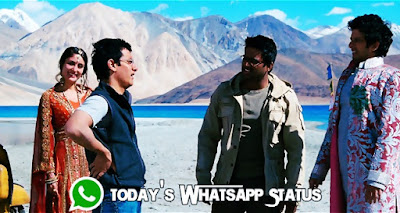50 years ago today.
Haiphong Harbor, 27 August 1972: In the last naval battle of the Vietnam War and the last time that American surface ships would close within mutal range of enemy shore batteries in a naval gunfire raid, Operation Lion’s Den was one for the books.
The four ships task unit four-ship task unit (TU 77.1.2) surface action group included the 8-inch-gunned heavy cruiser USS Newport News (CA-148) – -with VADM James Holloway, COMSEVENTHFLT, aboard no less!– followed by the 6-inch-gunned light cruiser USS Providence (CLG-6), the missile destroyer USS Robinson (DDG-12), and the ersatz “Wild Weasel” tin can Rowan (DD-782), would lay down a naval gunfire strike against targets in Haiphong, on the Do Son Peninsula and Cat Ba Island, all in North Vietnam’s home waters in conjunction with Operation Linebacker air strikes.
They would reportedly trade shells at a roughly 2:1 rate with NVA shore batteries, with the American guns being much more effective.

“When Lightning Followed Thunder” by Dale Byhre, showing the destroyer USS Rowan astern of the cruiser USS Newport News, as they engage in bombarding enemy shore installations and suppressing fire from enemy shore batteries.

The engagement as related by the flag officer on Providence, who fired 250 shells in the half-hour raid and reported a trio of responding P-6 (Soviet-made) torpedo boats sunk.
From Newport News‘ history:
During the 33-minute raid 433 8-inch, 532 5-inch, and 33 3-inch rounds were fired. Two secondary explosions had been observed and ammunition was seen “cooking off” at a coastal defense site. Seventy-five enemy rounds were counted. Shrapnel was found around some of the weather decks, but damage to the ship was negligible.
As noted by NHHC:
At 2300, Newport News opened fire with her 8-inch guns at the primary targets. Rowan fired four Shrike anti-radiation missiles at North Vietnamese radar sites (Rowan had been specially equipped with a “Shrike on Board” system mounted on her ASROC launcher).
During the course of the 33-minute engagement, North Vietnamese coast defense artillery fired about 300 rounds at the U.S. ships. Although none hit, many came as close as 15–20 yards. Newport News had shrapnel on her weather decks, but no serious damage. Holloway spent part of the battle outside the pilot house to “experience the battle” as he later said, probably to the consternation of the skipper. The North Vietnamese lacked flashless powder, so their guns proved vulnerable to U.S. fire and most were silenced. The U.S. ships ceased shelling at 2333 after expending about 700 rounds of ammunition and noting at least five major secondary explosions ashore.
While the U.S. would go on to use Naval Gunfire Support off Lebanon in 1983 (USS New Jersey) and in the Persian Gulf (destroyers and frigates during Operation Preying Mantis in 1988, and Desert Storm in 1991 with 1,083 16-inch shells lobbed by the battleships Missouri and Wisconsin), they wouldn’t take enemy shells back in kind.




















